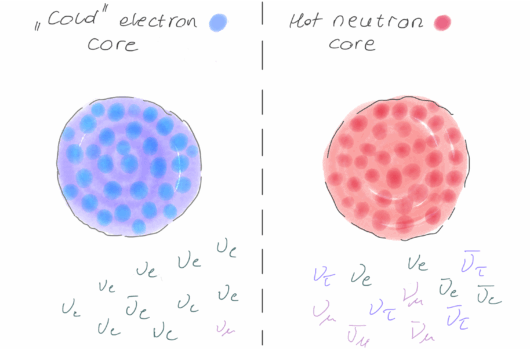Bayesian inference of multimessenger astrophysical data: Joint and coherent inference of gravitational waves and kilonovae
Bayesian inference of multimessenger astrophysical data: Joint and coherent inference of gravitational waves and kilonovae
View
Abstract
We present a Bayesian framework for joint and coherent analyses of multimessenger binary neutron star signals. The method, implemented in our bajes infrastructure, incorporates a joint likelihood for multiple datasets, support for various semi-analytical kilonova models and numerical-relativity (NR) informed relations for the mass ejecta, as well as a technique to include and marginalize over modeling uncertainties. As a first application, we analyze the gravitational-wave GW170817 and the kilonova AT2017gfo data. These results are then combined with the most recent X-ray pulsars analyses of PSR J0030+0451 and PSR J0740+6620 to obtain EOS constraints.Various constraints on the mass-radius diagram and neutron star properties are then obtained by resampling over a set of ten million parametrized EOS built under minimal assumptions. We find that a joint and coherent approach improves the inference of the extrinsic parameters (distance) and, among the instrinc parameters, the mass ratio. The inclusion of NR informed relations strongly improves over the case of using an agnostic prior on the intrinsic parameters. Comparing Bayes factors, we find that the two observations are better explained by the common source hypothesis only by assuming NR-informed relations. These relations break some of the degeneracies in the employed kN models. The EOS inference folding-in PSR J0952-0607 minimum-maximum mass, PSR J0030+0451 and PSR J0740+6620 data constrains, among other quantities, the neutron star radius to ![]() km (
km (![]() km) and the maximum mass to
km) and the maximum mass to ![]() (
(![]() ) where the ST+PDT (PDT-U) analysis for PSR J0030+0451 is employed.Hence, the systematics on PSR J0030+0451 data reduction currently dominate the mass-radius diagram constraints.
) where the ST+PDT (PDT-U) analysis for PSR J0030+0451 is employed.Hence, the systematics on PSR J0030+0451 data reduction currently dominate the mass-radius diagram constraints.





